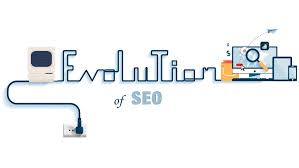Search engine optimization started as a straightforward game of matching words on a page to words typed into a search box. Over two decades it has transformed into a sophisticated discipline that blends linguistics, user experience, and machine learning. This article traces that journey, explains why understanding search intent matters more than ever, and gives practical, actionable steps you can apply to future-proof your organic strategy.
A short history: how SEO moved beyond keywords
In the early 2000s, SEO was largely about visible and invisible keywords, meta tags, and backlinks counted as simple votes. Major algorithm changes over the next 15 years — Panda to penalize low-quality, thin content; Penguin to punish manipulative link tactics; and later RankBrain, BERT and MUM to interpret meaning — steadily shifted the search engine’s goal from matching keywords to understanding user needs and content quality. Those changes forced a pivot away from manipulation tactics and toward genuinely useful content and signals that indicate a good user experience.
As Google’s systems began to use machine learning and large-scale natural language models, search results gradually started to prioritize pages that best solved the searcher’s problem rather than simply containing exact-match words. This is the reason modern SEO is less about cramming a phrase into a page and more about anticipating and answering user intent in context.
What “search intent” actually means today
Search intent, sometimes called user intent, is the why behind a query — whether the person wants to learn, compare, buy, or navigate to a specific site. Intent can be informational, commercial, transactional, or navigational, but today’s engines are even more granular: they look for the user’s implied task and context, such as location, device, and where the user is in a decision journey. Precision in interpreting intent is why search engines have invested heavily in NLP and knowledge systems, enabling them to serve direct answers, rich snippets, and contextual result sets rather than just lists of links.
Technical shifts that changed ranking signals
Alongside semantic understanding, Google introduced measurable user-experience signals like Core Web Vitals to quantify page performance: loading speed, interactivity, and visual stability. Those metrics are not mere UX niceties; they are explicit parts of page experience assessments and can influence rankings. If your pages are slow, jumpy, or unresponsive, you risk losing visibility even if your content is excellent. This technical layer means SEO teams must collaborate closely with engineering and product to deliver both relevance and quality.
Why intent-first content wins (and how to create it)
Think of search intent as the brief you must satisfy before you get to keyword optimization. To create intent-aligned content, start with accurate query mapping: look at the SERP features for target queries (featured snippets, People Also Ask, shopping results) to infer the kind of result Google expects. Then structure content to meet that expectation — provide quick answers for informational snippet opportunities, deep comparison guides for commercial queries, and clear calls to action for transactional searches.
When building pages, use natural language, answer the core question early, and add structured evidence (data, examples, testimonials) that proves your page solves the user’s problem. Incorporating semantic variants and question-style headings helps search engines match content to a wider set of user queries without keyword stuffing. This approach creates clearer signals for modern ranking systems that prioritize helpfulness and relevance over exact phrase frequency.
Practical checklist you can act on today
Audit your top landing pages for intent mismatch by comparing the page’s purpose to the current SERP intent. If visitors arrive seeking a quick how-to but your page is a long sales pitch, you will see higher bounce rates and poorer ranking performance. Optimize for experience: measure Core Web Vitals and fix the largest regressors first — large images, render-blocking scripts, or unoptimized third-party tags. These technical fixes are often high-ROI and can improve both traffic and conversions.
Keyword research for the modern web still matters, but use it to map intent rather than to force phrases. Group keywords by intent clusters, then create pillar-and-cluster structures that serve broader informational journeys and funnel users toward conversion when appropriate. If you’re training a team or learning the ropes, a focused Digital Marketing Course Online can accelerate your understanding of intent mapping, analytics, and content architectures in practical, hands-on ways.
Measuring success differently
Traditional vanity metrics like total organic impressions are useful but incomplete. Look deeper: measure pages by their intent-aligned KPIs — time to task completion, percentage of users who progress to the intended next step, and assisted conversions from organic visits. Combine these with technical health metrics such as Core Web Vitals and crawlability to get a full picture. When your metrics directly reflect user outcomes, your SEO roadmap will be better aligned with product and business goals.
How algorithm advances influence content strategy
Large language models and multi-task systems (RankBrain, BERT, MUM) are designed to understand nuance, anomalies, and context across languages and modalities. That means content that demonstrates expertise, authority, and trustworthiness (E-A-T) and provides verifiable, well-structured information tends to be favored. Use data, author credentials, citations, and transparent methodologies where appropriate. For commercial pages, ensure transparent product details, clear policies, and accurate pricing — elements that reduce friction for both users and crawlers.
Common pitfalls to avoid
Don’t optimize for a single keyword in isolation; don’t neglect page experience; and don’t treat technical SEO as a one-time task. A classic mistake is treating search as a funnel of keywords rather than a continuous dialogue with users where intent evolves. Keep your content updated, monitor SERP feature shifts, and maintain technical hygiene. These habits protect rankings when search engines roll out changes.
Looking ahead: what SEO will likely emphasize next
Search will continue moving toward fulfilling user tasks more completely. Expect further integration of generative models and richer direct-answer features that attempt to solve user problems without clicks. That raises both risks and opportunities: sites that deliver depth, unique data, and experience will remain valuable to users and to search engines. Conversely, thin aggregations or derivative content will struggle as engines favor originality and demonstrable expertise. Staying adaptable, maintaining technical excellence, and investing in real user utility will be the pillars of resilient SEO strategies.
Final takeaway: build for people, not for parsers
The true evolution of SEO is a cultural one: from gaming search engines with keywords to genuinely solving human problems with relevant, well-built content and experiences. If you focus on understanding and fulfilling user intent, keep your pages fast and accessible, and measure success by user outcomes, your organic channel will be stronger and more sustainable. Start by auditing a handful of high-traffic pages this week: check intent alignment, fix the top two Core Web Vitals offenders, and add missing evidence that proves your page’s value. Those three steps will move you significantly closer to modern, intent-led SEO.


